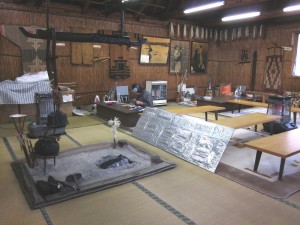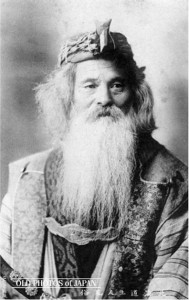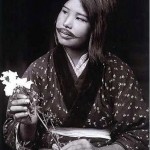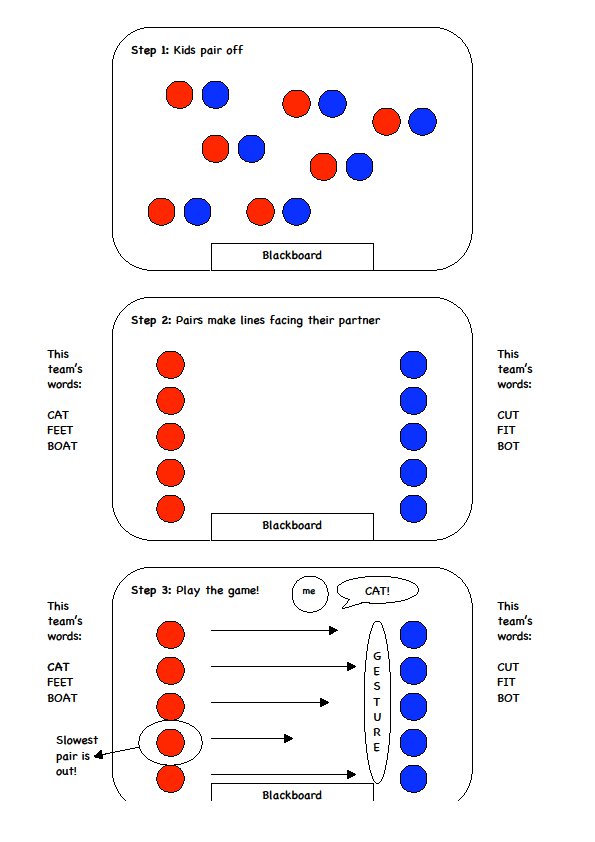English Sensei Spirit: Ainu Game
(Printouts are at the bottom of the post)
ALTs are frequently charged with presenting cultural games in addition to their English grammar repertoire. To my surprise, there aren’t many culture games available on Englipedia!
Maru-Batsu, or true-false games, are a great way to surprise and amaze your students. All you need in order to play are some true/false cards they can hold up (though in a pinch, just having them form their arms into a circle or an X will do).
This is one of the best games I played with my students in three years (I played it each year!). I call it simply: The Ainu Game. In essence, it’s a True/False game played in teams of 5 or so students. (I just tell my kids to get into “lunch groups’ and they seem to know what to do!) Each team needs to have a TRUE card and a FALSE card — I taped colorful construction paper with TRUE and FALSE on them to chopsticks, so the teams can hold up actual signs when they guess the answer.
 You will say a sentence in English about the Ainu, for example: “The Ainu have 20 letters in their alphabet.” The students will have a few seconds to deliberate intheir groups before you count down: “5, 4, 3, 2, 1!” — each time they will raise one of their cards: True or False. You then share the answer, in this case, FALSE! The teams who guessed right get a point. You can then explain that the Ainu do NOT have an alphabet at all. Next, you repeat with other sentences and explain away! You can find more facts online if you’d like, but I was never able to get through all of the ones attached here. While the English may be a little intimidating, I was able to successfully act out each one so that my students could understand them better. On a few of the questions, you can offer bonus points if you’d like. I only offered one question for bonus points and I marked it below. You could change the sentences around though, if you’d like, and make more bonus points available!
You will say a sentence in English about the Ainu, for example: “The Ainu have 20 letters in their alphabet.” The students will have a few seconds to deliberate intheir groups before you count down: “5, 4, 3, 2, 1!” — each time they will raise one of their cards: True or False. You then share the answer, in this case, FALSE! The teams who guessed right get a point. You can then explain that the Ainu do NOT have an alphabet at all. Next, you repeat with other sentences and explain away! You can find more facts online if you’d like, but I was never able to get through all of the ones attached here. While the English may be a little intimidating, I was able to successfully act out each one so that my students could understand them better. On a few of the questions, you can offer bonus points if you’d like. I only offered one question for bonus points and I marked it below. You could change the sentences around though, if you’d like, and make more bonus points available!
I also handed out various photos I printed online at the end of the class so the students could see the tattoos and houses. It was a big hit!
 This game was awesome because: A.) It let the students be exposed to lots of English they didn’t know — but, could understand via acting on your part. For some of the words, I let them use their dictionaries — for others, they had to just watch and listen. But, I mainly wanted to stress that if they tried and paid attention, they could get the general idea of what I was saying. B.) They have to think about the answers — this puts everyone one on an even playing field in their groups — rather than previous games I have played where the student who understood the most English answered all the questions. c.) It’s just fun to play games that are informative and interesting! I learned so much about the Ainu that it became my priority on a trip to Hokkaido to go to an Ainu village. And, indeed, we saw a mukurri concert, saw tons of bears in cages, and ate dried salmon! It was so amazing.
This game was awesome because: A.) It let the students be exposed to lots of English they didn’t know — but, could understand via acting on your part. For some of the words, I let them use their dictionaries — for others, they had to just watch and listen. But, I mainly wanted to stress that if they tried and paid attention, they could get the general idea of what I was saying. B.) They have to think about the answers — this puts everyone one on an even playing field in their groups — rather than previous games I have played where the student who understood the most English answered all the questions. c.) It’s just fun to play games that are informative and interesting! I learned so much about the Ainu that it became my priority on a trip to Hokkaido to go to an Ainu village. And, indeed, we saw a mukurri concert, saw tons of bears in cages, and ate dried salmon! It was so amazing.
Here is the list of all my questions and answers. I will also include a worksheet that I gave out so we could see how much the students were paying attention — for two teachers this was graded, and for another it was corrected in class for activity points.
















Hi, came across your blog post.
Glad to see that you are taking the opportunity to use your English lessons to help Japanese students learn about an aspect of Japanese society that unfortunately they learn very little about in their regular curriculum…
Just one suggestion I guess would be to make sure to emphasize that many of the aspects of Ainu culture are traditional aspects of Ainu culture and may no longer be practiced (ie as you pointed out about tree-bark clothing, traditionally Ainu got tattoo but no longer do, although they do not have their own alphabet they now use Katakana or the English alphabet to write the Ainu language, etc.). It may also be interesting to incorporate information about how present-day Ainu live in Japanese society, perhaps introducing some Ainu political figures or artists. Often I find Japanese people’s image of Ainu is “trapped in the past” so to speak.
Again, good job and best of luck!